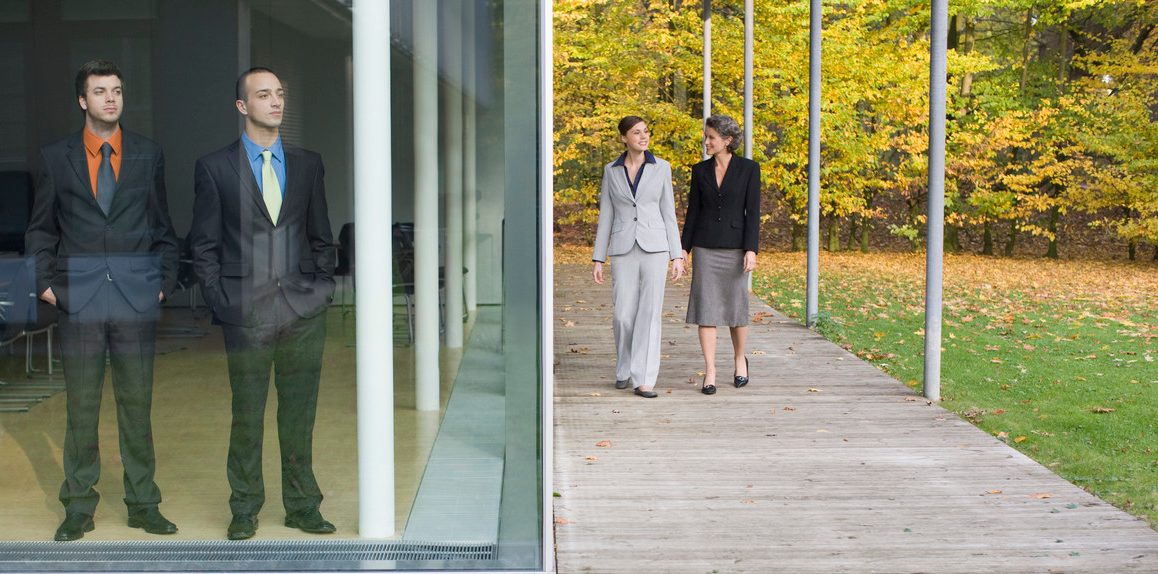Break up Hours of Sitting to Protect Your Health

Human beings just aren’t built to sit all day, and yet many do, increasing their risk for serious health problems. But taking intermittent short walks can help.
You’re in relatively good shape. You even exercise on a regular basis. You don’t have to worry if you sit at your desk all day, right? Wrong. All that time sitting in front of your computer can be a killer
It’s common knowledge that sedentary people are at increased risk for such serious health problems as obesity, heart disease, stroke, type 2 diabetes, depression, and some cancers. But even healthy people who exercise may still be at risk, if they spend too much time sitting. In fact, long periods of sitting can actually negate the good effect of your work-outs.
You can reverse the harmful effects of sitting by simply getting up and moving — for as little as five minutes every hour, a study at Indiana University found. One tip: people tend to sit for the longest stretches at the beginning of the workday.
YOU MIGHT ALSO LIKE: Exercise Might Be Your Most Valuable Prescription
The problem with prolonged sitting
“No one switches on a car and lets it idle for 13 hours a day,” said James Levine, PhD, director of the Mayo Clinic/Arizona State University Obesity Solutions Initiative, and author of the book “Get Up! Why Your Chair is Killing You and What You Can Do About It.”
“So why would you do that to your body?”
Prolonged sitting causes a drop in lipoprotein lipase, an enzyme that removes fat from your blood to be used for fuel, research has shown. Without sufficient levels of lipoprotein lipase, triglycerides (bad cholesterol) soar and HDL (good cholesterol) drops. In addition, all that sitting causes blood to pool in your legs, which in turn reduces blood flow to your heart, increasing your risk for developing heart problems such as deep vein thrombosis.
In the Indiana University study, researchers measured blood flow and arterial function in the legs of subjects who on one day sat for three hours without moving and on another day walked for five minutes once every hour.
“When people sat for three hours at a stretch, they had a decrease of blood flow in the legs,” said Saurabh Thosar, PhD, lead author of the study, now a postdoctoral researcher with the Oregon Institute of Occupational Health Sciences in Portland. Gravity plays a role: “When you’re sitting, your legs are lower than your heart, and it requires effort on the part of leg muscles and vessels to pump blood back to the heart.”
Take breaks every hour
“As soon as you walk, you double your metabolic rate above resting,” Levine said. “Even at one mile an hour, walking is a very powerful way of burning calories and activating your metabolism.”
Next best, do some leg exercises while you’re sitting. A sit-stand desk gives you the option of standing.
You still need to work out
Breaking up your sitting time isn’t a substitute for workouts. “Going to the gym benefits your health in a dose-respondent fashion; namely, the more you go, the more benefit you get,” Levine said. Give yourself a pat on the back: “If you think about people with regular jobs, it’s quite an achievement to get to a gym at the end of the workday.”
But exercising for an hour at the end of a day doesn’t necessarily offset the harm you’ve done to yourself during the other 13 hours of the day, he says.
Build movement into your day
The American College of Sports Medicine offers many suggestions for finding ways to work more activity into your daily routine:
- Stand up and move every time you take a drink of water.
- Stand up during phone conversations, especially long ones or conference calls.
- Move your meeting outside and walk while you talk.
- Take a walk with colleagues after lunch.
- Walk to a co-worker’s desk instead of calling or sending an email.
- Use the long route when you visit the restroom.
- Take a short walk around the office for every coffee break.
Other options include taking the stairs when possible, instead of the elevator, or parking a little farther away from work. But Levine cautions against becoming too reliant on “tips and tricks” to get moving.
“There’s a big difference between tips and tricks and plans,” he said. The key is to find things you “can actually do, but to make it a proper plan because this is a big issue. The world is engineered to sit, and that needs to change.”
You may find it motivating to remember that moving may boost your thinking. In addition, if you can get an adjustable work station, at least one study found that 62 percent of workers actually used the feature and stood for part of the day.
Updated:
February 24, 2022
Reviewed By:
Christopher Nystuen, MD, MBA and Janet O'Dell, RN